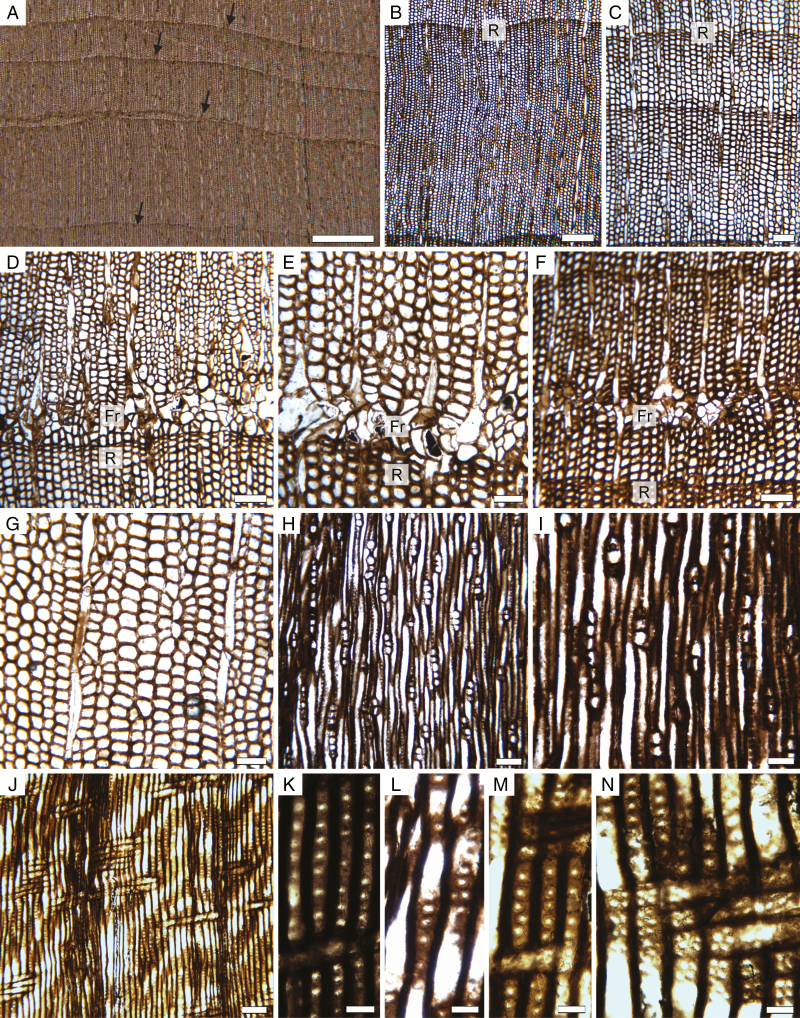Fig. 3.
Triassic trees with epicormic shoots from Gordon valley: wood anatomy. (A) Transverse section of wood showing growth rings of various thicknesses. Arrows indicate ring boundaries. 18,292 Cbot1 (slide 30,291). (B) Detail of a wide growth ring (R: ring boundary). 18,292 Cbot1 (slide 30,291). (C) Detail of a smaller ring (R: ring boundary). 18,291 Ctop1 (slide 30,290). (D) Frost ring (Fr) occurring early in growth. 18,291 Ctop1 (slide 30,290). (E) Detail of cell distortion in a frost ring (Fr). 18,294 Btop1 (slide 30,293). (F) Frost ring (Fr) occurring later during the growth season. 18,291 Ctop1 (slide 30,290). (G) Disturbed radial arrangement of tracheid files. 18,294 Btop1 (slide 30,293). (H) General view in tangential longitudinal section showing low uniseriate rays. 18,294 A1 (slide 30,282). (I) Detail of rays in tangential longitudinal section. 18,294 A1 (slide 30,282). (J) Radial longitudinal section showing low parenchymatous rays, pitting on the radial wall of tracheids and a ring boundary. 18,294 A1 (slide 30,282). (K–N) Radial pitting. 18,294 A1 (slide 30,282). (K) Vertically spaced rounded pits. (L) Partly biseriate pitting with opposite pits. (M) Uniseriate crowded pits. (N) Detail of numerous, small crowded cross-field pits. Scale bar in (A) 1 mm, (B) 250 µm, (C), (D), (F), (H), (J) 100 µm, (E), (G), (I) 50 µm, (K), (L), (M), (N) 25 µm.

